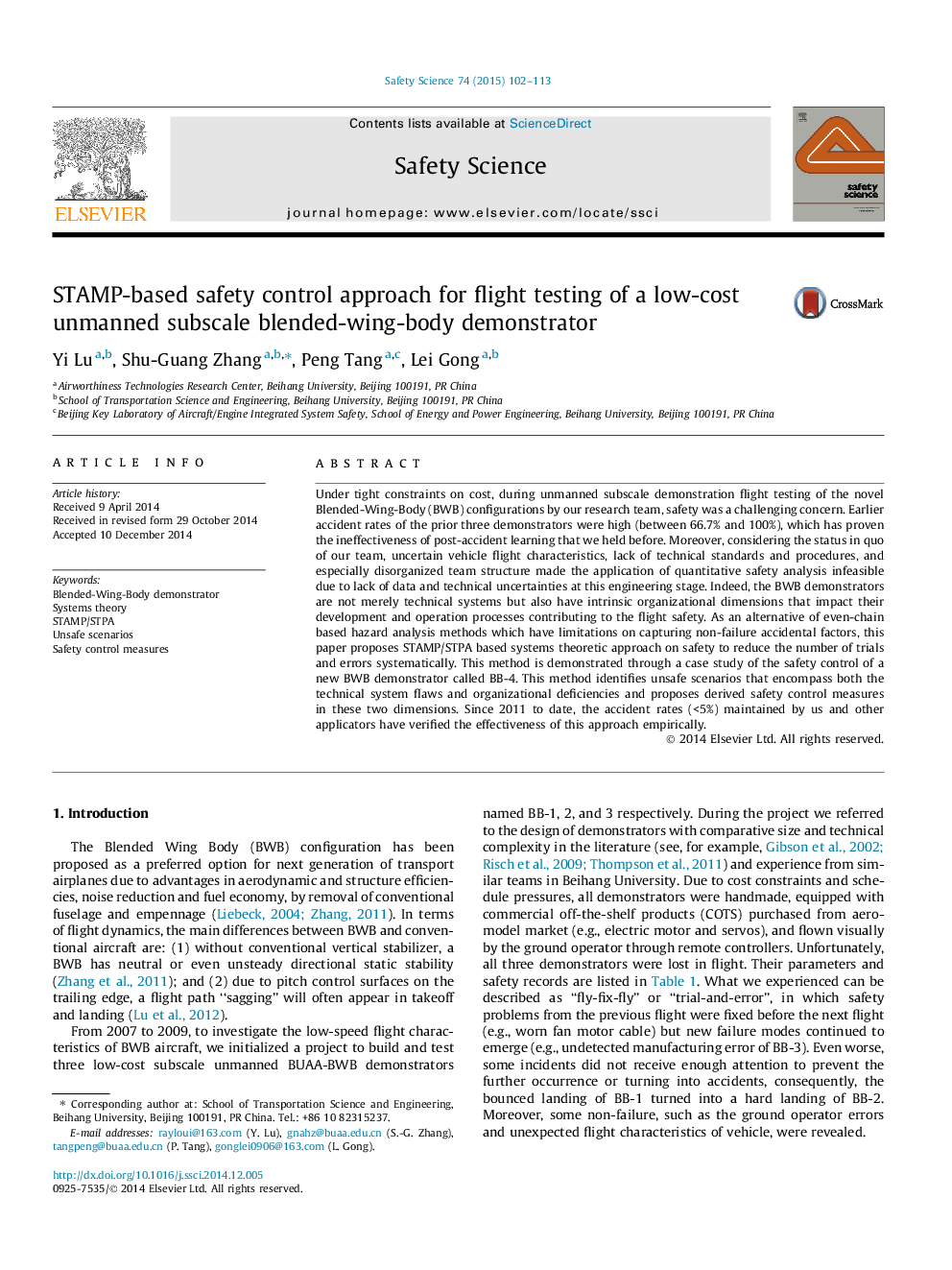| Article ID | Journal | Published Year | Pages | File Type |
|---|---|---|---|---|
| 6975970 | Safety Science | 2015 | 12 Pages |
Abstract
Under tight constraints on cost, during unmanned subscale demonstration flight testing of the novel Blended-Wing-Body (BWB) configurations by our research team, safety was a challenging concern. Earlier accident rates of the prior three demonstrators were high (between 66.7% and 100%), which has proven the ineffectiveness of post-accident learning that we held before. Moreover, considering the status in quo of our team, uncertain vehicle flight characteristics, lack of technical standards and procedures, and especially disorganized team structure made the application of quantitative safety analysis infeasible due to lack of data and technical uncertainties at this engineering stage. Indeed, the BWB demonstrators are not merely technical systems but also have intrinsic organizational dimensions that impact their development and operation processes contributing to the flight safety. As an alternative of even-chain based hazard analysis methods which have limitations on capturing non-failure accidental factors, this paper proposes STAMP/STPA based systems theoretic approach on safety to reduce the number of trials and errors systematically. This method is demonstrated through a case study of the safety control of a new BWB demonstrator called BB-4. This method identifies unsafe scenarios that encompass both the technical system flaws and organizational deficiencies and proposes derived safety control measures in these two dimensions. Since 2011 to date, the accident rates (<5%) maintained by us and other applicators have verified the effectiveness of this approach empirically.
Keywords
Related Topics
Physical Sciences and Engineering
Chemical Engineering
Chemical Health and Safety
Authors
Yi Lu, Shu-Guang Zhang, Peng Tang, Lei Gong,
